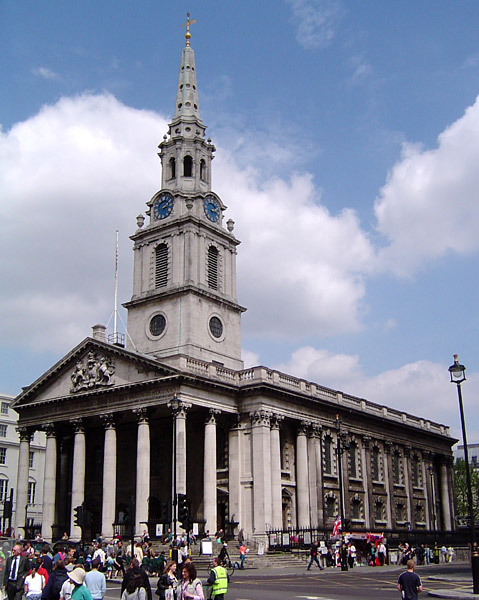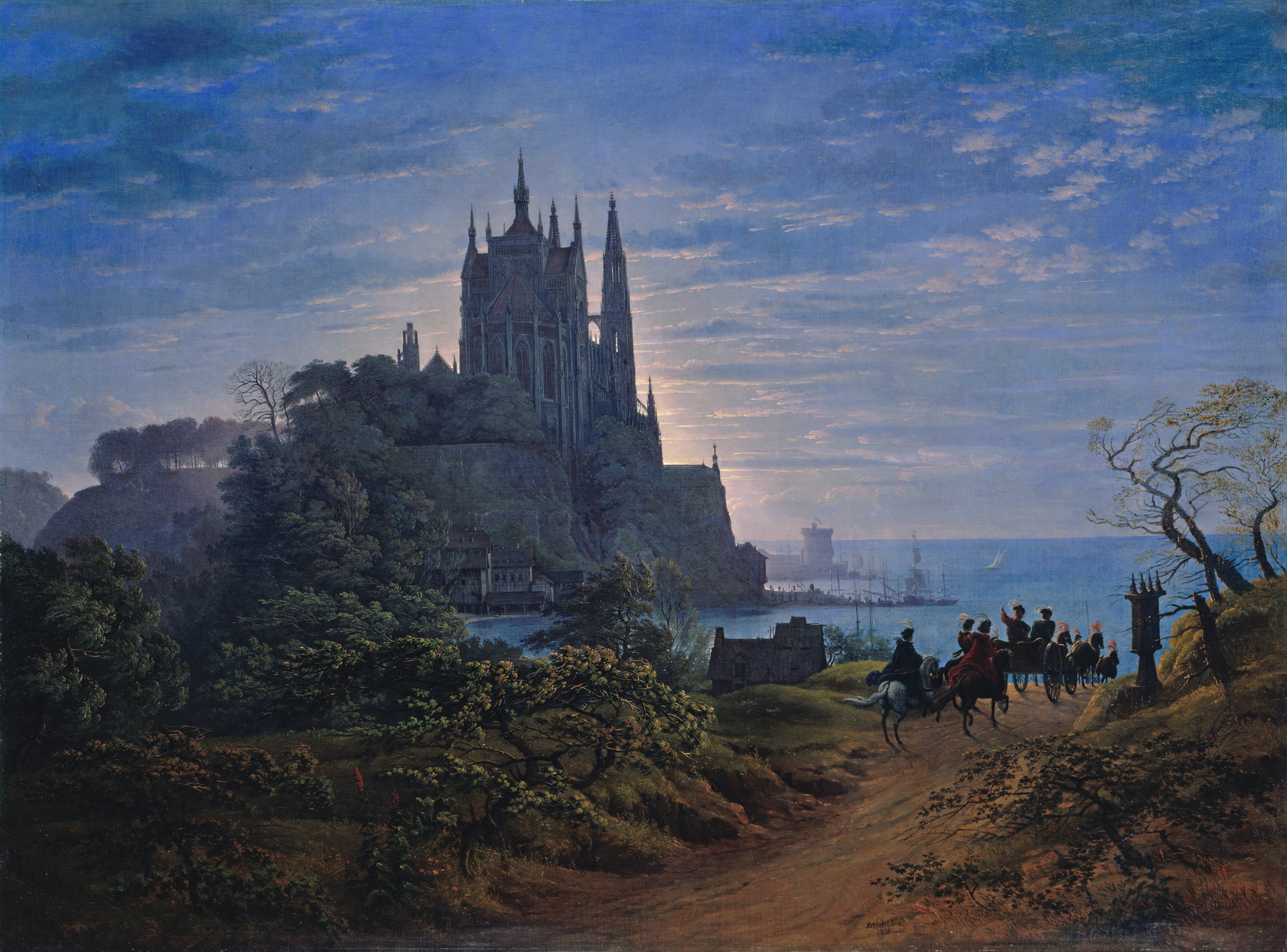|
1781 In Architecture
The year 1781 in architecture involved some significant architectural events and new buildings. Buildings and structures Buildings * Brizlee Tower, Alnwick, Northumberland, England, a folly erected for Hugh Percy, 1st Duke of Northumberland, possibly designed by Robert Adam * St. Hilarius Parish Church of Näfels, Switzerland, designed by architects Johann Singer and Jakob Singer. * Triumphal Arc, Kamianets-Podilskyi, Ukraine, built for the visit of Polish King Stanisław August Poniatowski to the city of Kamianets-Podilskyi. *Sturehov Manor near Stockholm, designed by Carl Fredrik Adelcrantz, probably completed. *Montagu House, Portman Square, London, designed by James Stuart, completed. Awards * Grand Prix de Rome, architecture: Louis Combes. Births *March 13 – Karl Friedrich Schinkel, Prussian architect, city planner, and painter (died 1841) *August 12 – Robert Mills, possibly the first native-born American to train as a professional architect (died 1855) . Death ... [...More Info...] [...Related Items...] OR: [Wikipedia] [Google] [Baidu] |
James Stuart (1713–1788)
James Stuart may refer to: Government and politics * James VI and I (1566–1625), James VI of Scotland and James I of England * James II of England (1633–1701), James VII of Scotland * James Fitz-James Stuart, 2nd Duke of Berwick (1696–1738), Jacobite and Spanish nobleman * James Fitz-James Stuart, 3rd Duke of Berwick (1718–1787), Jacobite * James Francis Edward Stuart (1688–1766), "the Old Pretender", claimant to the thrones of England and Scotland * James Stuart, Duke of Cambridge (1663–1667), second son of the Duke of York and his first wife, Anne Hyde * James Stuart (1681–1743) (died 1743), British Army officer, courtier and politician, Member of Parliament (MP) for Ayr Burghs 1734–41 * James Stuart (1774–1833), British businessman and politician, director of The East India Company, MP for Huntingdon 1824–31 * James Stuart (1775–1849), Scottish politician * James Stuart-Wortley (Conservative politician) (1805–1881), British Conservative Party pol ... [...More Info...] [...Related Items...] OR: [Wikipedia] [Google] [Baidu] |
1781 Works
Events January–March * January – William Pitt the Younger, later Prime Minister of Great Britain, enters Parliament, aged 21. * January 1 – Industrial Revolution: The Iron Bridge opens across the River Severn in England. * January 2 – Virginia passes a law ceding its western land claims, paving the way for Maryland to ratify the Articles of Confederation. * January 5 – American Revolutionary War: Richmond, Virginia is burned by British naval forces, led by Benedict Arnold. * January 6 – Battle of Jersey: British troops prevent the French from occupying Jersey in the Channel Islands. * January 17 – American Revolutionary War – Battle of Cowpens: The American Continental Army, under Daniel Morgan, decisively defeats British forces in South Carolina. * February 2 – The Articles of Confederation are ratified by Maryland, the 13th and final state to do so. * February 3 – Fourth Anglo-Dutch War – Capture o ... [...More Info...] [...Related Items...] OR: [Wikipedia] [Google] [Baidu] |
1726 In Architecture
The year 1726 in architecture involved some significant events. Buildings and structures Buildings * Work begins on the Dresden Frauenkirche, in Dresden, Germany, designed by George Bähr (completed in 1743; destroyed in 1945; reconstructed in 2005). * Completion of St Martin-in-the-Fields Church, London, designed by James Gibbs. Awards * Grand Prix de Rome, architecture: François Carlier. Births *November 15 – Henry Keene, English architect (died 1776) Deaths * March 26 – Sir John Vanbrugh (born 1664) * September 16 – Jakob Prandtauer (born 1660) References architecture Architecture is the art and technique of designing and building, as distinguished from the skills associated with construction. It is both the process and the product of sketching, conceiving, planning, designing, and constructing buildings ... Years in architecture 18th-century architecture {{Architecture-hist-stub ... [...More Info...] [...Related Items...] OR: [Wikipedia] [Google] [Baidu] |
Pietro Camporese The Elder
Pietro Camporese the Elder (1726–1781) was an Italian architect. Life Camporese was born and died in Rome, the first of a family of architects active in the city in the 18th and 19th centuries. His sons Giuseppe and Giulio are recorded as collaborating with their father on the building of the Duomo at Subiaco, and his grandchild Pietro Camporese the Younger (1792–1873), who led the reconstruction of Rome's basilica of San Paolo fuori le Mura. In 1754 Pietro the elder won second prize for Architecture in the "Concorso Clementino" from Rome's Accademia nazionale di San Luca The Accademia di San Luca (the "Academy of Saint Luke") is an Italian academy of artists in Rome. The establishment of the Accademia de i Pittori e Scultori di Roma was approved by papal brief in 1577, and in 1593 Federico Zuccari became its fi ..., where he later became a professor. His architecture is typical of the eclectic tendency of Roman architects of the late 18th century, before neoclassic ... [...More Info...] [...Related Items...] OR: [Wikipedia] [Google] [Baidu] |
Princeton Architectural Press
Princeton Architectural Press is a small press publisher, specializing in books on architecture, design, photography, landscape, and visual culture, with over 1,000 titles on its backlist. In 2013, it added a line of stationery products, including notebooks and notecards; the following year it began publishing children's books. The press was founded in 1981 in Princeton, New Jersey, by Kevin Lippert, who was then studying architecture at Princeton University. In 1985, it moved to New York City, where it operated for years in the East Village neighborhood. In 2014, it moved again, to Hudson, N.Y., where it also runs a retail store, Paper + Goods. It is not related to Princeton University Press. Since 1996, Princeton Architectural Press has been distributed in the Americas by Chronicle Books. It was part of the German publishing group Springer Science+Business Media from 1997 to 2009. In early 2010, Lippert reacquired Springer's shares. In 2011, Princeton Architectural Press was a ... [...More Info...] [...Related Items...] OR: [Wikipedia] [Google] [Baidu] |
1855 In Architecture
The year 1855 in architecture involved some significant architectural events and new buildings. Events * October 15 – The second of the Prussia Columns is inaugurated, on the 60th birthday of their instigator, King Frederick William IV of Prussia. Buildings and structures Buildings completed * The Palais de l'Industrie for the Exposition Universelle in Paris, France, mainly designed by the architect Jean-Marie-Victor Viel and the engineer Alexis Barrault. * in Paris, designed by Louis-Auguste Boileau, is completed. * Church of St John the Evangelist, Preston, Lancashire, England, designed by E. H. Shellard, is completed. * The Old Stone Church (Cleveland, Ohio) in the United States, designed by Charles Heard and Simeon Porter. * Church of Saint Bartholomew, Brugherio in Italy, rebuilt to the design of Giacomo Moraglia, is completed. * St Mary's Cathedral, Killarney, Ireland (Roman Catholic), to the design of Augustus Pugin following his death. * The Victoria Tower of th ... [...More Info...] [...Related Items...] OR: [Wikipedia] [Google] [Baidu] |
Robert Mills (architect)
Robert Mills (August 12, 1781 – March 3, 1855) was a South Carolina architect known for designing both the first Washington Monument, located in Baltimore, Maryland, as well as the better known monument to the first president in the nation's capital, Washington, DC. He is sometimes said to be the first native-born American to be professionally trained as an architect. Charles Bulfinch of Boston perhaps has a clearer claim to this honor. Mills studied in Charleston, South Carolina, as a student in the lower school at the College of Charleston and of Irish architect James Hoban, and later worked with him on his commission for the White House. This became the official home of US presidents. Both Hoban and Mills were Freemasons. Mills also studied and worked with Benjamin Henry Latrobe of Philadelphia. He designed numerous buildings in Philadelphia, Baltimore, and South Carolina, where he was appointed as superintendent of public buildings. His Washington Monument in Washingto ... [...More Info...] [...Related Items...] OR: [Wikipedia] [Google] [Baidu] |
August 12
Events Pre-1600 *1099 – First Crusade: Battle of Ascalon Crusaders under the command of Godfrey of Bouillon defeat Fatimid forces led by Al-Afdal Shahanshah. This is considered the last engagement of the First Crusade. * 1121 – Battle of Didgori: The Georgian army under King David IV wins a decisive victory over the famous Seljuk commander Ilghazi. * 1164 – Battle of Harim: Nur ad-Din Zangi defeats the Crusader armies of the County of Tripoli and the Principality of Antioch. *1323 – The Treaty of Nöteborg between Sweden and Novgorod Republic is signed, regulating the border between the two countries for the first time. *1492 – Christopher Columbus arrives in the Canary Islands on his first voyage to the New World. *1499 – First engagement of the Battle of Zonchio between Venetian and Ottoman fleets. 1601–1900 *1624 – Charles de La Vieuville is arrested and replaced by Cardinal Richelieu as the French king's chief advisor. *1676 &n ... [...More Info...] [...Related Items...] OR: [Wikipedia] [Google] [Baidu] |
1841 In Architecture
The year 1841 in architecture involved some significant events. Buildings and structures Buildings * April 13 – Original Semperoper in Dresden, designed by Gottfried Semper, opened. * September 2 – Leeds Parish Church reconsecrated after reconstruction. * Pori Old Town Hall in Finland, designed by Carl Ludvig Engel, completed. Publications * English architect Augustus Pugin publishes an article on English parish churches in the ''Dublin Review'' (London Catholic periodical); two lectures on ''The True Principles of Pointed or Christian Architecture'' and a revised edition of his 1836 book ''Contrasts''. Awards * Grand Prix de Rome, architecture: Alexis Paccard. Births * February 7 – Auguste Choisy, French architect (died 1909) * July – Richard Carpenter, English architect (died 1893) * July 10 – John Belcher, English architect (died 1913) * July 17 – John Oldrid Scott, English architect (died 1913) * July 13 – Otto Wagner, Austrian architect (died 1918) * Augus ... [...More Info...] [...Related Items...] OR: [Wikipedia] [Google] [Baidu] |
Karl Friedrich Schinkel
Karl Friedrich Schinkel (13 March 1781 – 9 October 1841) was a Prussian architect, city planner An urban planner (also known as town planner) is a professional who practices in the field of town planning, urban planning or city planning. An urban planner may focus on a specific area of practice and have a title such as city planner, town ... and painter who also designed furniture and stage sets. Schinkel was one of the most prominent architects of Germany and designed both neoclassical and neogothic buildings. His most famous buildings are found in and around Berlin. Biography Schinkel was born in Neuruppin, Margraviate of Brandenburg. When he was six, his father died in the disastrous Neuruppin fire of 1787. He became a student of architect Friedrich Gilly (1772–1800) (the two became close friends) and his father, David Gilly, in Berlin. At that time, the architectural taste in Prussia was shaped in neoclassical style, mainly by Carl Gotthard Langhans, the archit ... [...More Info...] [...Related Items...] OR: [Wikipedia] [Google] [Baidu] |
March 13
Events Pre-1600 *624 – The Battle of Badr, the first major battle between the Muslims and Quraysh. * 1567 – The Battle of Oosterweel, traditionally regarded as the start of the Eighty Years' War. * 1591 – At the Battle of Tondibi in Mali, Moroccan forces of the Saadi dynasty, led by Judar Pasha, defeat the Songhai Empire, despite being outnumbered by at least five to one. 1601–1900 * 1639 – Harvard College is named after clergyman John Harvard. *1697 – Nojpetén, capital of the last independent Maya kingdom, falls to Spanish conquistadors, the final step in the Spanish conquest of Guatemala. * 1741 – The Battle of Cartagena de Indias (part of the War of Jenkins' Ear) begins. * 1781 – William Herschel discovers Uranus. * 1809 – Gustav IV Adolf of Sweden is deposed in the Coup of 1809. *1811 – A French and Italian fleet is defeated by a British squadron off the island of Vis in the Adriatic during the Napoleo ... [...More Info...] [...Related Items...] OR: [Wikipedia] [Google] [Baidu] |



_b_181_(levels_adjusted).jpg)


